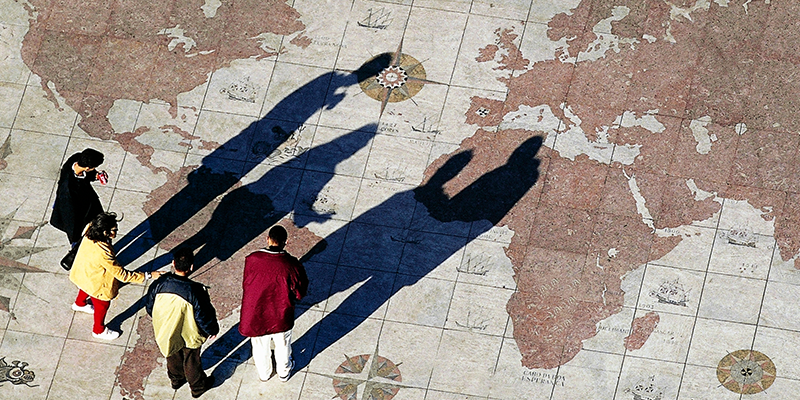Transnational Organised Crime and Illicit Financial Flows in Latin America

Transnational Organised Crime and Illicit Financial Flows in Latin America
The GCSP interviewed Professor Celina B. Realuyo, expert on transnational organised crime in Latin America. Professor Realuyo is a Professor of Practice at the William J. Perry Center for Hemispheric Defense Studies at the National Defense University in the United States. She is also an Adjunct Professor at the George Washington University and a Senior Fellow at the Joint Special Operations University.
What is the role of organised crime in Latin America?
Drug, human, arms, contraband, gold and wildlife trafficking make organised crime organisations among the most powerful, wealthiest and deadliest non-state actors in the world, especially in Latin America. Organised crime presents a national and regional security threat to the whole region. Due to record levels of violence associated with organised crime, most Latin American countries dedicate significant resources to security rather than to socio-economic development. When polled, Latin Americans list insecurity, the economy and corruption as their top three concerns, ahead of democratic processes such as elections.
Due to fragile democratic institutions, lack of economic opportunity, inequality and corruption, organised crime actually provides livelihoods for much of the population marginalised by the legitimate economy. Organised crime groups thrive in a culture of corruption, where the state is unable to provide security, prosperity, the rule of law and governance. In some areas, like in Central America, organised crime groups – namely the gangs – actually provide a form of alternative governance to the communities where the state is absent, supplying employment, social services and security to the local population.
Where are the hot spots? Who is affected most? How are people targeted?
Colombia and Mexico are perhaps the most notorious countries in Latin America for the type of organised crime that has been glorified in Netflix series like Narcos. Colombia is one of the top producers of cocaine in the world. Unfortunately, armed groups in Colombia such as the cartels and the FARC and ELN guerrilla groups have enriched themselves and their insurgencies through drug trafficking to the extent of being able to threaten the government’s ability to control large parts of the country for the past 50 years. Drug trafficking remains the most lucrative illicit business in the world, and, according to the United Nations (UN), Colombian cocaine can fetch as much as US$180,000 per kilogram in, for example, Australia. From the growing and harvesting of coca leaves, to the drug laboratories that manufacture cocaine, to the distribution networks, Colombian criminal and terrorist groups control the illicit business cycle and use violence or the threat of violence to maintain that control. They regularly encounter Colombian military and police operations aimed at dismantling their criminal networks, but these operations have largely failed to stop these groups’ activities.
Meanwhile, the illicit drug trade in the Americas has been evolving and expanding from plant-based narcotics like cocaine, heroin and marijuana to potent synthetic substances like fentanyl and methamphetamine. Since the 1980s, the US war on drugs has focused on countering the cocaine trafficking that has made the Colombian and Mexican cartels immensely wealthy and powerful. Over the past decade, US narcotics consumption has shifted significantly from cocaine to opioids and methamphetamine, resulting in an unprecedented opioid epidemic, with 72,037 drug overdose deaths recorded in 2017, according to the Centers for Disease Control and Prevention. As a result, Mexican cartels are increasingly trafficking opioids and synthetic drugs to respond to market changes in the United States. The breaking up of large cartels and increased competition to dominate trafficking routes to the United States have resulted in record levels of violence in Mexico, with 29,111 homicides recorded in 2018. The failed Mexican government operation to capture one of El Chapo Guzman’s sons on 17 October 2019 demonstrated how the Sinaloa cartel is able to outgun Mexican security forces, on this occasion terrorising and effectively controlling the city of Culiacan for hours. The cartels have also been diversifying their criminal activities into human trafficking, extortion, kidnapping for ransom and gasoline smuggling.
Can you explain the financial flows of organised crime in Latin America?
The main objective of organised crime groups is to maximise their profits by engaging in illicit activities like drug, human, arms and contraband trafficking. Financing is indispensable to support and sustain the command and control systems, personnel, arms, communications, logistics and operations of criminal networks. It serves as the lifeblood for criminals who derive power from their wealth and use it to corrupt and co-opt rivals, facilitators, and/or government and security officials. Through money laundering, criminals try to disguise the proceeds, sources of funding and nature of their illicit activities. Methods of money laundering include using the banking system, cash couriers, bulk cash smuggling, money services businesses, alternative remittance systems, store-of-value cards, trade-based money laundering, mobile or internet payments, crypto currencies, and front companies. Cash is still king in narcotics trafficking and is regularly smuggled across borders to finance the various parts of the supply chain and those who support it. Just as countries throughout Latin America serve as production and transit points for organised crime, money laundering to circulate the financial flows takes place throughout the region.
How do governments/organisations respond to transnational organised crime? Do policies/protocols exist?
At the national level, Latin American governments have identified organised crime as a top threat and priority. Their strategies have included the security, economy and educational aspects of countering crime. Police forces are charged with the primary mission of countering organised crime. In several countries, governments have adopted an aggressive “mano dura” (firm hand) approach that has led to armed conflict and increased violence. In other instances, when governments have negotiated or brokered a truce with criminal groups, these groups have capitalised on this accommodation policy to further empower themselves. Unfortunately, criminal groups often are better equipped and trained than the security forces charged with countering them. In the case of some countries, like Colombia and Mexico, the military has been deployed to support the police in confronting the cartels and other armed groups, with mixed results. One of the greatest threats to government strategies to combat organised crime has been corruption within their police forces, many of whose members have been co-opted by the cartels and gangs. To mitigate the recruitment of new members by criminal groups and gangs, Latin American countries have focused on promoting socio-economic developments to create jobs in the licit economy and invested in educational programming for youth at risk of being drawn into gang or cartel activities. Latin American countries receive significant foreign assistance from the United States and Europe to improve their security systems, economies, judiciaries and anti-corruption measures.
What is the most important factor that is misunderstood about organised crime in Latin America?
Due to the proliferation of Hollywood films on cocaine trafficking in Latin America, there is a misperception that organised crime in the region is exclusively involved in drug trafficking. While narcotics trafficking is the most reported and most lucrative illicit activity in Latin America, many other forms of crime threaten security and generate income for criminal groups. For example, human trafficking is the second-most-profitable activity, bringing in over US$150 billion in income worldwide, according to the UN. Just as drugs are moved along intricate supply chains, people migrating northwards to the United States are smuggled and trafficked along the same routes. Drug cartels in Mexico have actually diversified into human trafficking to complement the drug trade. Another important income-earning activity is extortion, which takes place throughout Latin America, but is particularly violent in Central America due to the activities of the gangs that terrorise and victimise local communities. Gold trafficking is yet another lucrative activity of organised crime, exploiting miners, damaging the environment, distorting market prices, and enriching criminal and guerrilla groups in South America. Therefore, organised crime in Latin America is engaged in a wide range of illicit activities that have a detrimental impact on the security, economy, environment and society of the region.

